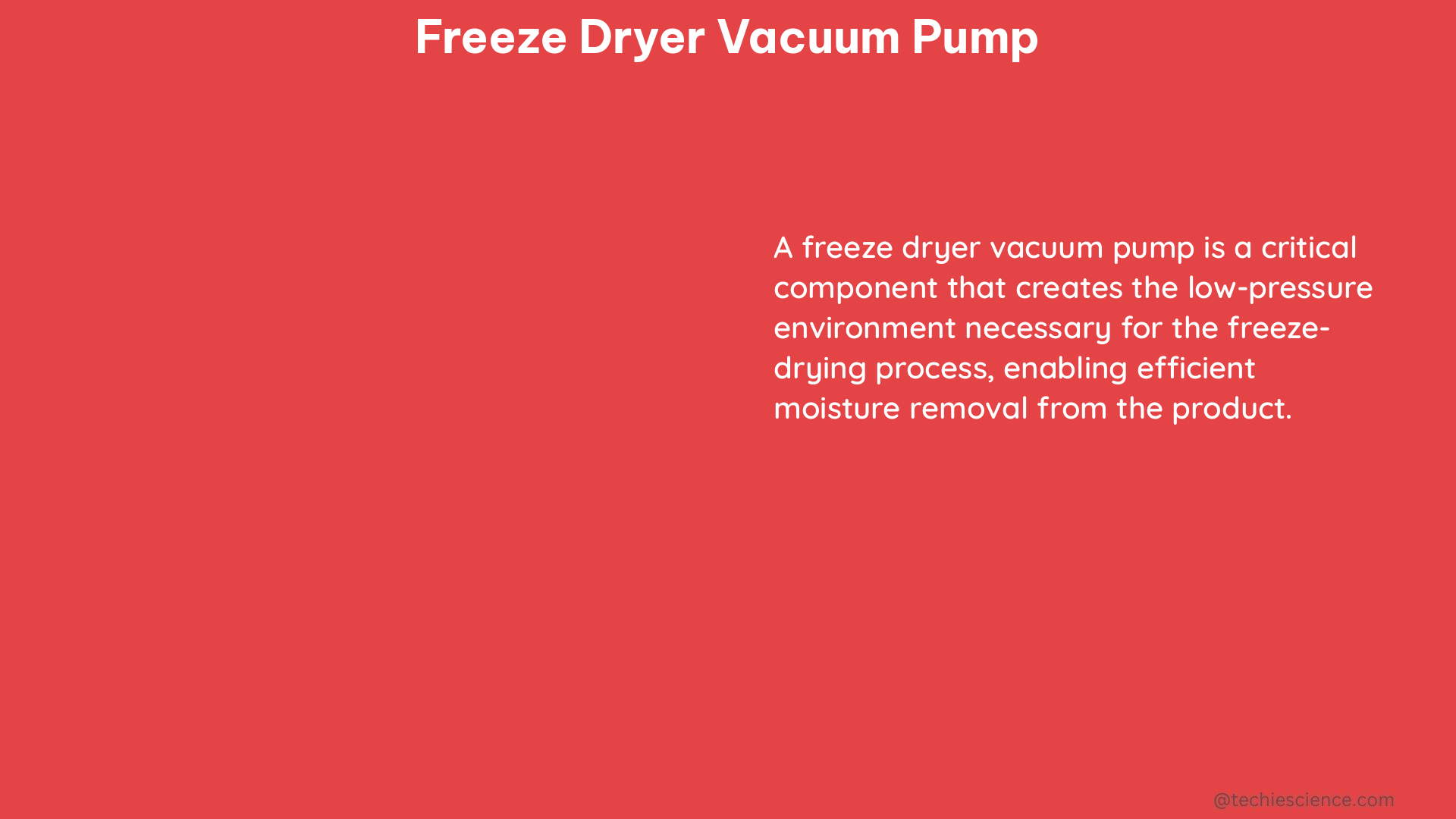The freeze dryer vacuum pump is a critical component of the freeze-drying process, responsible for maintaining the required low-pressure conditions within the freeze-dryer chamber. Its performance significantly impacts the quality and efficiency of the freeze-dried product, making it a crucial element in the overall success of the freeze-drying operation.
Minimum Controllable Chamber Pressure Testing
Determining the minimum chamber pressure the freeze dryer can control is essential for successful freeze-drying. This test aims to evaluate the equipment’s ability to maintain a specific pressure range as a function of the sublimation rate under full product load. The minimum controllable chamber pressure is typically measured in millitorrs (mTorr) and should be within the range of 50-100 mTorr for optimal performance.
To conduct this test, the freeze dryer is loaded with the maximum product capacity, and the chamber pressure is gradually reduced until the minimum controllable pressure is reached. The sublimation rate is monitored to ensure that it remains within the desired range, typically between 0.5 to 2.0 kg/m²/h for pharmaceutical-grade freeze-drying processes.
Vacuum Pressure Readings

During the vacuum test, the mTorr (vacuum pressure) reading is recorded after 15 minutes of running both the vacuum and freeze components. This measurement provides valuable insights into the performance of the vacuum system.
A reading below 500 mTorr indicates that the vacuum system is performing well and maintaining the necessary low-pressure conditions. Conversely, a reading above 2500 mTorr suggests a significant leak or a potential issue with the vacuum pump, requiring further investigation and troubleshooting.
Leak Rate Testing
Identifying and addressing any leaks in the freeze dryer system is crucial for ensuring optimal performance. Guidelines for systematic leak rate testing criteria have been established to help manufacturers and operators maintain the integrity of their freeze-drying equipment.
The leak rate test typically involves pressurizing the freeze dryer chamber with an inert gas, such as nitrogen or helium, and then monitoring the pressure drop over a specified time period. The acceptable leak rate is generally less than 5 mTorr/min, with a maximum allowable leak rate of 10 mTorr/min for most pharmaceutical-grade freeze-drying applications.
Condensing Temperature
The condenser surface temperature significantly influences the process conditions within the freeze dryer. By maintaining appropriate thermal conditions on the cooled surfaces of the freeze dryer condenser, the freeze-drying process can be optimized.
The condenser temperature should be maintained at a minimum of 20°C below the product’s eutectic temperature or the collapse temperature, whichever is lower. This ensures that the water vapor generated during the sublimation process is effectively captured and removed from the system, preventing it from re-entering the product chamber and compromising the final product quality.
Shelf Temperature Mapping
Ensuring consistent product quality during the freeze-drying process requires a thorough understanding of the thermal uniformity within the freeze dryer. Shelf temperature mapping is a technique used to quantify the thermal distribution across the product shelves.
This process involves placing multiple temperature sensors on the shelves and recording the temperature readings at various locations. The goal is to achieve a temperature variation of less than ±2°C across the entire shelf area, which is considered the industry standard for pharmaceutical-grade freeze-drying applications.
By conducting these comprehensive tests and measurements, freeze dryer operators can optimize the performance of the vacuum pump and ensure the overall efficiency and consistency of the freeze-drying process. Maintaining the appropriate vacuum pressure, addressing any system leaks, and controlling the thermal conditions within the freeze dryer are critical factors in producing high-quality, freeze-dried products.
Reference:
- Recommended Best Practices in Freeze Dryer Equipment Performance Qualification 2022
- Freeze Dryer Vacuum Pump Performance Evaluation
- Performing Vacuum Test on Freeze Dryer

The lambdageeks.com Core SME Team is a group of experienced subject matter experts from diverse scientific and technical fields including Physics, Chemistry, Technology,Electronics & Electrical Engineering, Automotive, Mechanical Engineering. Our team collaborates to create high-quality, well-researched articles on a wide range of science and technology topics for the lambdageeks.com website.
All Our Senior SME are having more than 7 Years of experience in the respective fields . They are either Working Industry Professionals or assocaited With different Universities. Refer Our Authors Page to get to know About our Core SMEs.